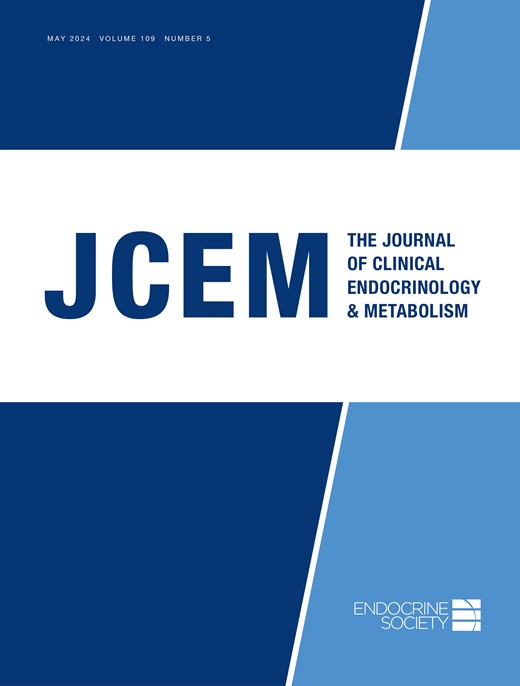Appraising the effect of potential risk factors on thyroid cancer: A Mendelian randomization study.
IF 5.1
2区 医学
Q1 ENDOCRINOLOGY & METABOLISM
引用次数: 4
Abstract
BACKGROUND Various risk factors have been associated with the risk of thyroid cancer in observational studies. However, the causality of the risk factors is not clear given the susceptibility of confounding and reverse causation. A 2-sample Mendelian randomization approach was used to estimate the effect of potential risk factors on thyroid cancer risk. METHODS Genetic instruments to proxy 55 risk factors were identified by genome-wide association studies (GWAS). Associations of these genetic variants with thyroid cancer risk were estimated in GWAS of the FinnGen Study (989 cases and 217,803 controls). A Bonferroni-corrected threshold of P=9.09×10 -4 was considered significant, and P<0.05 was considered to be suggestive of an association. RESULTS Telomere length was significantly associated with increased thyroid cancer risk after correction for multiple testing (OR=4.68, 95%CI 2.35 to 9.31, P=1.12×10 -5). Suggestive associations with increased risk were noted for waist-to-hip ratio (OR=1.85, 95%CI 1.02 to 3.35, P=0.042) and diastolic blood pressure (OR=1.03, 95%CI 1.00 to 1.06, P=0.040). Suggestive associations were noted between hemoglobin A1c (HbA1c) (OR=0.20, 95%CI 0.05 to 0.82, P=0.025) and decreased risk of thyroid cancer. Risk of thyroid cancer was not associated with sex hormones and reproduction, developmental and growth, lipids, diet and lifestyle, or inflammatory factors (All P>0.05). CONCLUSION Our study identified several potential targets for primary prevention of thyroid cancer, including central obesity, diastolic blood pressure, HbA1c, as well as telomere length that should inform public health policy.评估潜在危险因素对甲状腺癌的影响:一项孟德尔随机研究。
背景:在观察性研究中,各种危险因素与甲状腺癌的风险相关。然而,考虑到混杂和反向因果关系的易感性,危险因素的因果关系尚不清楚。采用双样本孟德尔随机化方法评估潜在危险因素对甲状腺癌风险的影响。方法通过全基因组关联研究(GWAS)确定55个危险因素的遗传工具。在FinnGen研究的GWAS(989例和217,803例对照)中估计了这些遗传变异与甲状腺癌风险的关联。bonferroni校正阈值P=9.09×10 -4被认为具有显著性,P0.05)。我们的研究确定了甲状腺癌一级预防的几个潜在靶点,包括中心性肥胖、舒张压、HbA1c以及端粒长度,这些指标应该为公共卫生政策提供信息。
本文章由计算机程序翻译,如有差异,请以英文原文为准。
求助全文
约1分钟内获得全文
求助全文
来源期刊
CiteScore
11.40
自引率
5.20%
发文量
673
审稿时长
1 months
期刊介绍:
The Journal of Clinical Endocrinology & Metabolism is the world"s leading peer-reviewed journal for endocrine clinical research and cutting edge clinical practice reviews. Each issue provides the latest in-depth coverage of new developments enhancing our understanding, diagnosis and treatment of endocrine and metabolic disorders. Regular features of special interest to endocrine consultants include clinical trials, clinical reviews, clinical practice guidelines, case seminars, and controversies in clinical endocrinology, as well as original reports of the most important advances in patient-oriented endocrine and metabolic research. According to the latest Thomson Reuters Journal Citation Report, JCE&M articles were cited 64,185 times in 2008.

 求助内容:
求助内容: 应助结果提醒方式:
应助结果提醒方式:


